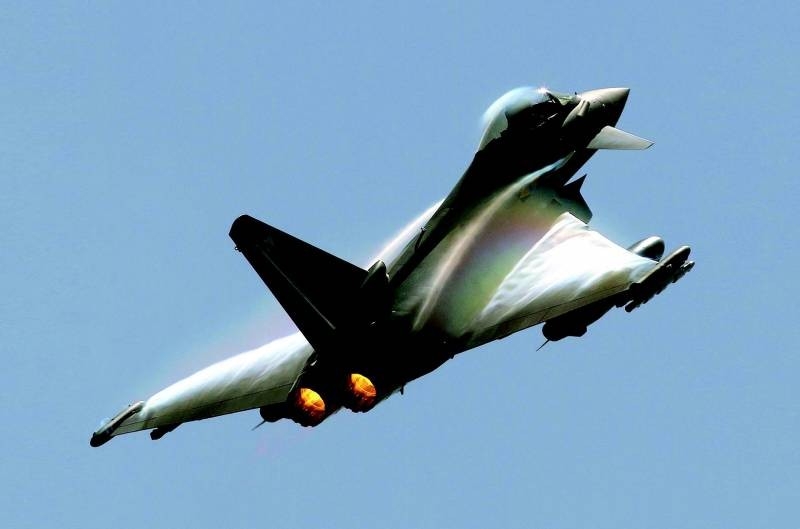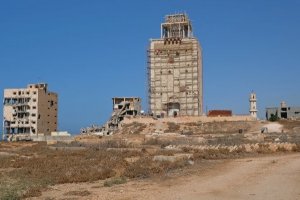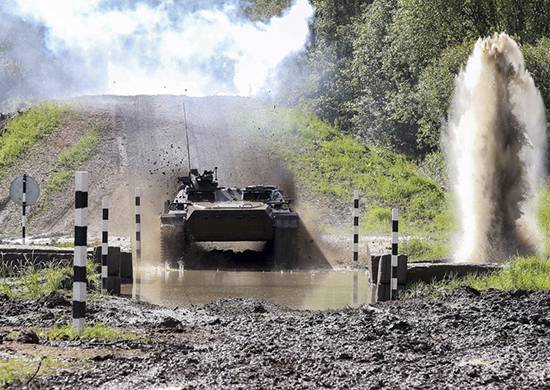
Despite the fact, that information published in the Spanish military-analytical publication infodefensa.com about the upcoming large-scale update of the airborne radar systems of the Typhoon multifunctional fighters of Tranche modifications 1/2/3 The Luftwaffe and the Spanish Air Force received close attention only from Western European expert circles, the technological features of this modernization program should be carefully analyzed by specialists as the Russian defense department, and the leading aircraft manufacturing holding PJSC "Company" Sukhoi ". The need to give this event wider publicity in the Russian expert communities does not tolerate delay and is dictated by a number of strong justifications of a technological and operational-tactical nature..
Building on data, voiced by the head of the military-industrial division "Airbus Defense & Space” by Kurt Rossner during a recent conference in Manching, Germany, as well as from earlier information about the optional upgrade of the Typhoon avionics, appearing in the Western European media space with 2014 of the year, can come to the conclusion, what 110 German and 19 Spanish EF-2000 will be re-equipped with promising anti-jamming airborne radars with active phased arrays E-Scan Mk 1, while the Royal Air Force Typhoons will receive an even more advanced modification of the E-Scan Mk 2, referred to in the British press as "Radar 2 configuration».
Airborne radar "Captor-E" open up new horizons for the air forces of the countries-operators of multifunctional fighters of the "Typhoon" family
Both modifications of the E-Scan airborne radar are the brainchild of the Leonardo transnational military-industrial corporation and are being developed as part of the ambitious Captor-E project., designed to bring the combat potential of the Typhoon fleet of all "tranches" to the level of the "4 ++" generation, both in the tasks of gaining air supremacy in a difficult jamming environment and long-range interception, and in the tasks of delivering strikes against surface targets and suppressing enemy air defenses.
It is well known, that almost all combatant EF-2000 "Typhoon", in service with the British Air Force, Germany, Italy and Austria, to this day they are equipped with obsolete airborne radars with slotted antenna arrays ECR-90 "Captor-M". According to the level of noise immunity, resolution, range, bandwidth (the number of simultaneously tracked "on the way" targets) and target channelization, Captor-M radars are significantly inferior not only to the most advanced multi-element AFAR radars AN / APG-77 / 79 / 81, installed on the multifunctional fighter F-22A "Raptor", «Super Hornet» и F-35A «Lightning II», but also by the domestic airborne radar with passive HEADLIGHTS "Bars-R" of Su-30SM fighters, Irbis-E of Su-35S fighters and Zaslon-AM of MiG-31BM interceptors. In particular, target acquisition range with an effective reflective surface 1 quarter. m using the Captor-M radar is no more than 90-95 km (in simple interference environment), while the Bars and Irbis-E radars are capable of “capturing” airborne objects with a similar radar signature at a distance 110 and 270 km respectively, and in a much more complex interference environment.
As a result, even the integration of promising "straight-through" ultra-long-range air combat missiles MBDA "Meteor" with an active radar seeker into the Typhoon ammunition does not guarantee the crews of these vehicles to confidently maintain air supremacy in a hypothetical long-range air combat with our Su-30SM and Su-35S. The most acute problem with the “ancient” Captor-M radars will be felt in the event of an attempt to penetrate the EF-2000 Typhoon links into the powerful A2 / AD air defense zones of the Russian Aerospace Forces and military air defense in the East European theater of operations (in the regions of the Republic of Crimea and the Kaliningrad region).

Washington launched a screenplay about the "Russian threat" to support Libya's NTC terrorists
Operation on the outskirts of these zones of radar surveillance and guidance aircraft E-3C / D / F NATO OVVS will be minimized in connection with the ultra-long-range S-400 Triumph and S-300V4 air defense systems on combat duty (equipped with 48N6DM and 9M82MV missiles with ranges 250 and 380 km respectively), as well as long-range interceptors MiG-31BM, able to deal with AWACS even at distant approaches using R-37M missiles. It is logical to assume, that the issuance of early target designation "Typhoons", and then the MBDA "Meteor" missiles on the trajectory under the above conditions will be excluded, and therefore the pilots of the EF-2000 will have to rely only on the antediluvian airborne radars of their own machines, which will not be able to select "Sushki" against the background of the noise interference generated by the "Khibiny" complexes, aimed in frequency and barrage in the direction of noise interference.
The mechanical drive for the rotation of the antenna web and operation in the electronic warfare mode once again confirm the superiority of the AFAR technology. Another "stone in the garden" of domestic radars with passive HEADLIGHTS
Re-equipment of Typhoon fleets with the latest Leonard E-Scan Mk radars 1/2 («Captor-E») not only literally overnight eliminates the entire range of the above problems, but will also allow Typhoon weapon control systems to implement a number of additional unique modes of operation. In addition to the highest noise immunity, due to the presence in the architecture of each APAA transceiver module of an individual low-noise microwave transistor / amplifier and attenuator / attenuator (provide the formation of a flexible radiation pattern with "dips" in the direction of enemy electronic warfare stations), both modifications of the Captor-E radar will be equipped with a mechanical drive for turning the antenna web of the active phased array.
This design solution is a rare and somewhat unique "chip" in relation to the basic technology of active phased antenna arrays., providing for mounting the web on a fixed hardware module with an inclined support side. Thanks to this solution, the azimuth field of view of the Captor-E is not standard 120 ° (Raptor Radar AN/AG-77), a more than 200° with partial coverage of the rear hemisphere, which will allow Typhoon pilots to keep the missile, aircraft dangerous direction in the radar scanning area without the need to approach the most dangerous part of the airspace (the lines of action of air combat missiles or missiles of a potential enemy). Furthermore, turning the antenna fabric allows E-Scan Mk radars 1/2 (unlike the fixed AN / APG-77 and AN / APG-81) maintain the proper energy potential of the scanning beam when tracking targets, located at angles of more than 30-45 ° from the longitudinal axis of the fighter (in the lateral hemispheres).
As for the Captor-E airborne radar of the E-Scan Mk modification 2 / Radar 2 configuration (for British Typhoons), then certain arrays of its transceiver modules (several hundred), apparently, will be synchronized with dedicated RF tunable filters RFTF (Radio Frequency Tunable Filters), providing a wide frequency range of work on radiation. This solution will allow the E-Scan Mk AFAR radar 2 implement electronic warfare mode, providing the radiation of a narrow "interference beam" of high spectral density in the direction of radar reconnaissance and active / semi-active radar seeker of the enemy. The American AN / APG-79 / 81 airborne radars of the Super Hornet and Lightning families have a similar mode of operation..
Eugene Damantsev











